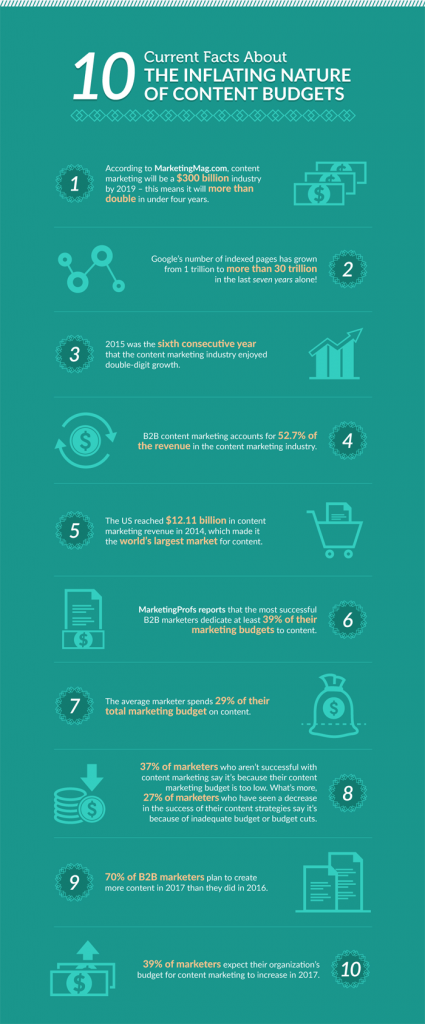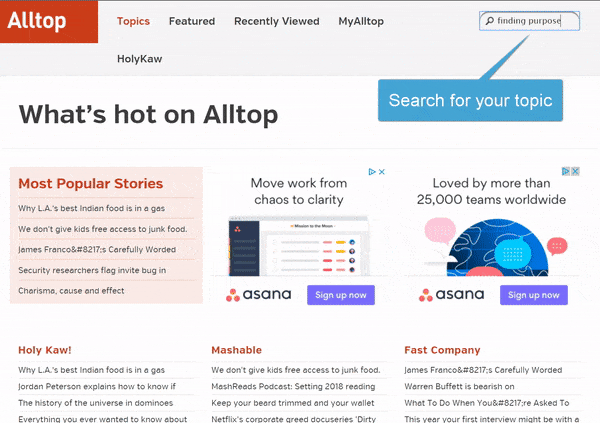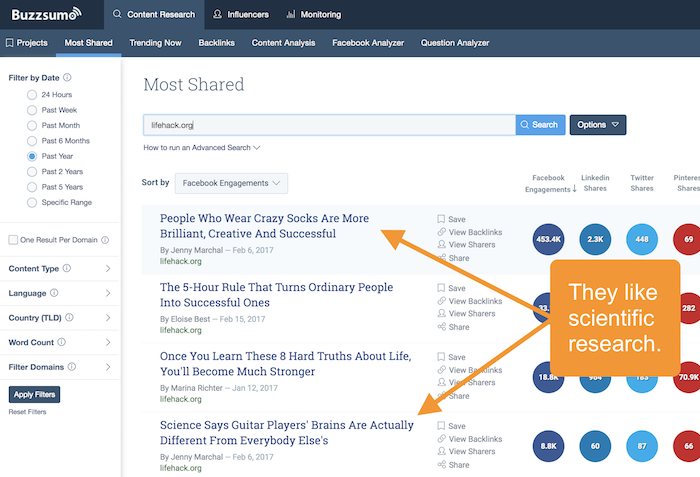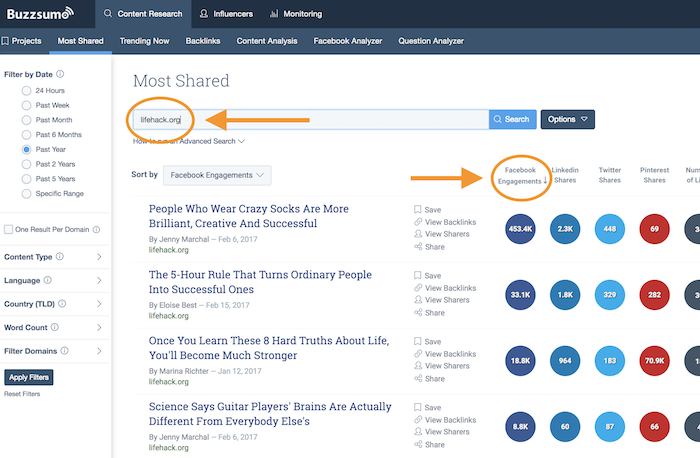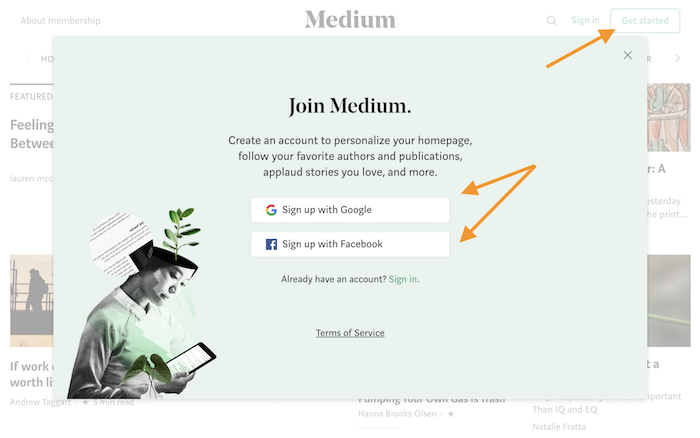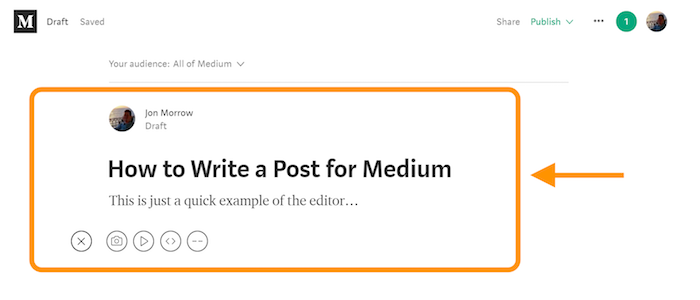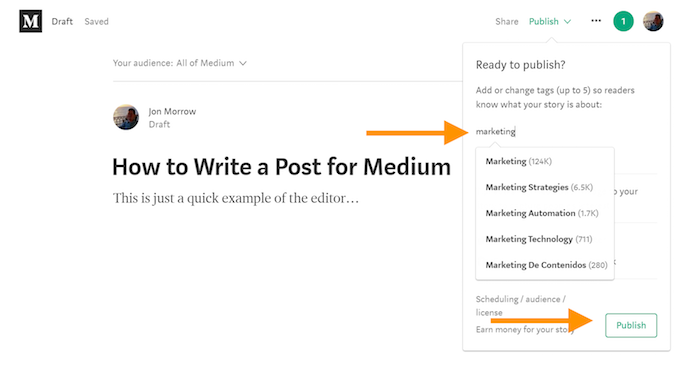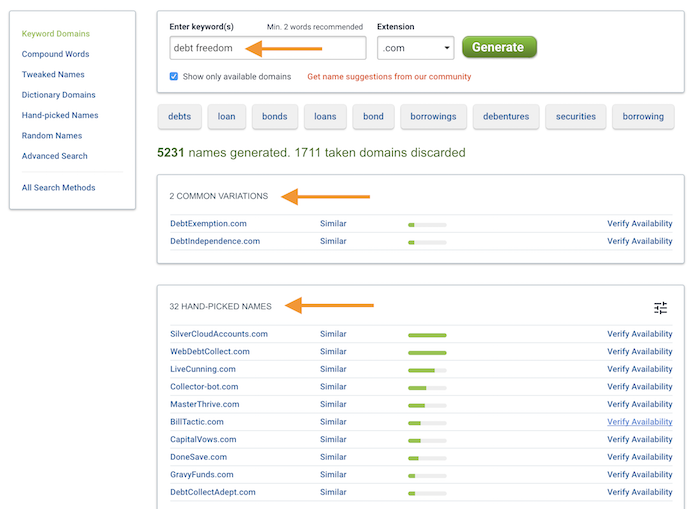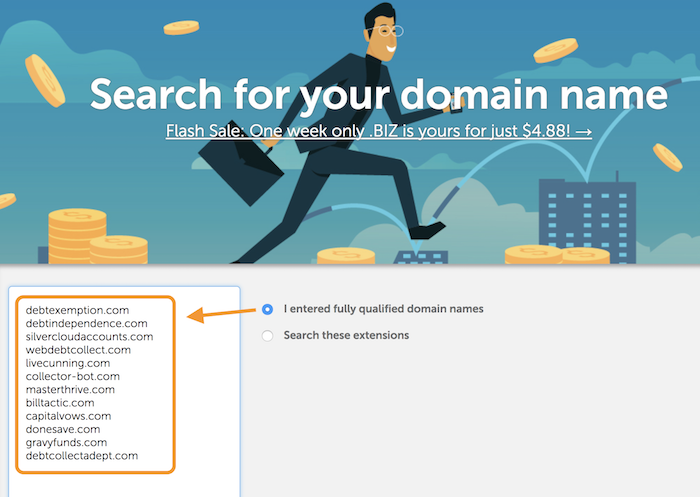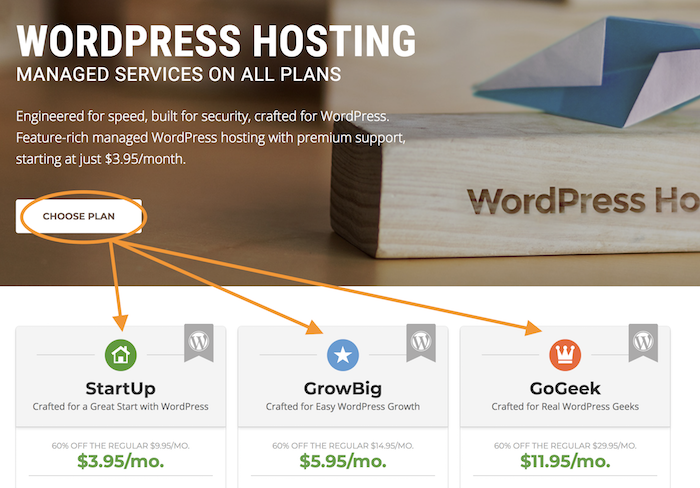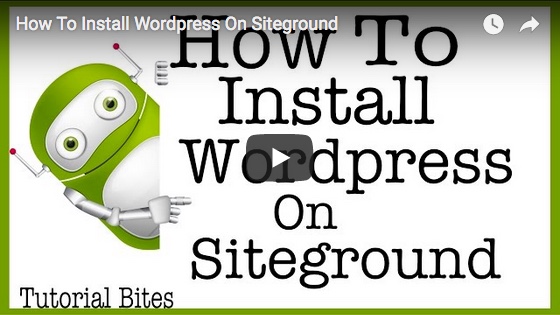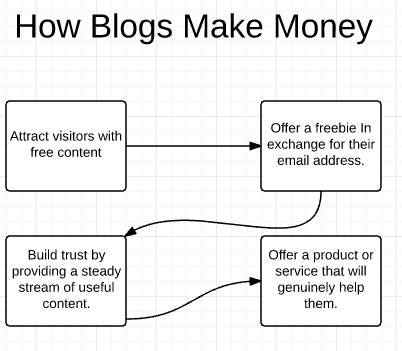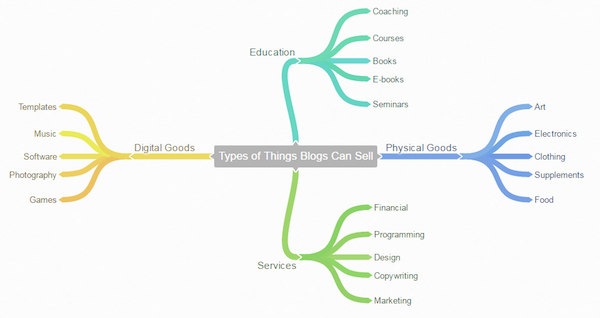Should You Even Start a Blog in 2018?
With the dominance of video content on platforms like YouTube and Facebook, you might think the whole idea of blogging is a little… out of date. Research tells a different story, though:
And it’s not just companies who are getting great results from blogging. It also works well for…
- Nonfiction authors: Before giving you a book deal, publishers want to know you have a “platform” — an audience who will be happy to buy and promote your book. Blogging is one of the best ways to build that platform, and so it’s no coincidence many popular bloggers also become bestselling authors.A blog is also helpful when you’re self-publishing. By leveraging your existing audience, you can drive your book up the Amazon bestseller list, giving you the chance to grab the attention of readers who would’ve never heard of you otherwise.
- Lifestyle entrepreneurs: If you enjoy writing, and you’re willing to be patient, you can use blogging to produce a passive income that gives you the lifestyle many people only dream of having. Top bloggers often travel the world, buy dream homes in the mountains or next to the ocean, and have nearly unlimited free time to spend with their family or doing whatever they choose.Where does the money come from? You can read this comprehensive post for a step-by-step walk-through of the process, but here’s the short version:In the past, bloggers were limited to selling advertisements and sponsorships, but today you can make even more money from affiliate marketing, creating your own course, or charging ultra-high rates for coaching/consulting. For example, I once charged $1000 per hour for advice over the phone, only worked five hours a week, and had a six-month waiting list.That being said, it’s hard to do. You need the skill, persistence, and talent to attract hundreds of thousands or even millions of readers. If you can pull it off though, you may never have to worry about money again.
- Mature businesses with millions of potential customers: This might be surprising, but not all businesses should start a blog. If you’re running a tech startup, small retail store, or manufacturing plant, for example, it’s probably not the best use of your time. On the other hand, it’s a great fit for mature businesses in markets with millions of potential customers.By “mature,” I’m referring to companies with a refined and effective product or service, existing revenue (at least six figures), and a deep understanding of their marketing metrics. In other words, you’re not really guessing about whether your company will succeed. You’re just looking for a way to grow.And ideally, you’re in a market with millions of potential customers. This one can be tricky because it’s not the size of the market that matters. Space rocket manufacturing is a multibillion-dollar industry, but I would guess there are a few hundred customers out there buying rockets. On the other hand, there are millions of small businesses, clothes shoppers, productivity geeks, and so on. For a blog to be effective, that’s the kind of market you want.
So, let’s say you fall into one of these categories. Should you just install WordPress and get cracking?
Actually… no.
The Old Way to Create a Blog (And Why It Doesn’t Work)
A few years ago, I would’ve said WordPress was the only game in town. It’s faster, more powerful, and more customizable than anything out there. That’s why they power 27% of the sites in the world.
The problem?
WordPress is also extremely complicated. Here’s a typical list of tasks for setting up a new site:
- Purchase web hosting
- Set up a new site through cPanel
- Create a new WordPress installation through Fantastico or one of their competitors
- Pick out and install your WordPress theme
- Customize your theme until it looks the way you want
- Install and configure caching plugins
- Install and configure backup plugins
- Add any extra functionality you need, such as social sharing, e-commerce, etc., by installing additional plug-ins
If you’re a techie, and you’ve done it all before, it’s not a big deal. You can do it all in a few hours.
But if you’re a beginner using WordPress for the first time?
It’s overwhelming, and once you see how much there is to learn, you’ll probably feel like quitting. If you do push forward, you can spend months or even years stuck in a technical quagmire, just learning how to do everything the right way.
Of course, you can always outsource it, but you don’t really know what you are doing, your chances of picking the wrong service provider is pretty high. You might get scammed, hacked, or overcharged.
And here’s the really disturbing question:
Even if you get your WordPress site set up the right way, what if you discover you chose the wrong market or nobody likes the content you are publishing?
It happens all the time. When I was a beginner, I went through three failed blogs before I created one that succeeded. Each time, I spent dozens of hours setting up WordPress, only to discover the blog was never going to work, and I had to start over. If you push forward and set up WordPress without testing your idea first, I pretty much guarantee the same thing will happen to you too.
The bottom line:
Putting it all together, I think setting up a WordPress site is the worst possible approach for a beginner. You’re just setting yourself up for failure.
Fortunately, after working with thousands of students, I’ve discovered a new method that is much, much easier, not to mention faster, and I’m going to outline the entire process for you here.
How to Start a Blog the Right Way (the New Method)
The driving principle behind this new method is simple:
Waste as little effort as possible.
If you’re familiar with the thinking behind The Lean Startup by Eric Reis, everything outlined here will intuitively make sense to you. If not, here’s the idea:
Innovation is messy. Anytime you create something new — regardless of whether it’s an app or book or blog — there’s a huge chance of getting it wrong and having to start over.
The problem with blogging?
Most people don’t know there’s a huge chance of failure, so they spend months or even years creating a blog that has zero chance of succeeding. Eventually, they realize where they went wrong, and they start over, but again, they invest months or even years into creating a second (or third or fourth) blog that doesn’t work.
And here’s the part that’s tough to swallow:
This kind of failure is inevitable. Whenever you’re doing anything new, you will make mistakes and have to start over. It doesn’t matter if you are smart, rich, or successful at many other things. The first time you launch a blog, you will fail. It’s pretty much guaranteed to happen.
The good news is, you can dramatically speed up the process. Instead of wasting months or years chasing a bad idea, you can find out if it’s going to work in weeks or even days. In fact, the process I’m outlining here often destroys a bad idea within minutes.
The result?
You waste WAY less time. Instead of banging your head against the wall for months or even years before you finally figure everything out, you can adapt quickly and get to the right idea within a matter of weeks or months. It’s at least 20X faster. Probably more like 100X.
So, let’s dive in:
#1. Make Sure Your Blog Is Actually Viable (Not All Are)
Important: The ideas in this section are subtle and hard to grasp. Reread it several times, and think about it carefully. We have tested it on thousands of students starting their blogs, and there’s no question it’s correct, but it’s easy to misinterpret these rules. When in doubt, consult an expert (like us).
It’s not fun to think about, but if there’s no chance in hell of your blog succeeding, wouldn’t you rather find out right now?
Well, sometimes you can.
One of the most damaging myths about blogging is the belief that you can start a successful blog targeting anyone, almost as if it’s a one-size-fits-all technology for getting “free traffic.” But it’s not true. The fact is, blogs are good at getting traffic when targeting specific kinds of audiences, and they are absolutely terrible when targeting others.
It’s also shockingly common to target the wrong audience. Of the thousands of students who come into our courses, more than 95% begin by targeting a poor or nonexistent audience that will never be able to support a successful blog, no matter how much time they put into it, and we have to use this checklist to push them in the right direction.
Surprising, right? You probably had no idea there was such a thing as a “bad audience,” but it’s true.
Here are some examples:
- Men suffering from erectile dysfunction
- Business executives
- Parents
- People struggling with depression
- Women who are planning their wedding
- Guys struggling to understand masculinity
- Freelancers
- Breeders of Dobermans
To be clear, I’m not saying you can’t target these audiences. I’m saying blogging is an inefficient way of attracting them. You’re better off using advertising, public relations, attending conferences, etc.
Of course, the obvious question is, “Why?” Why is it that some audiences are well-suited to blogs and others aren’t?
Let’s step through the criteria, and I believe it will become more clear. A good audience…
- Self-identifies (“That’s me!”). Recent scientific research suggests that some boys who are raised by single mothers struggle to understand their own masculinity. The problem is, they don’t think of themselves that way. If you were to ask a group of men, “How many of you have trouble understanding your masculinity?” no one would raise their hands.The solution: target the symptom. Ask, “How many of you get friend-zoned by girls, and you can’t figure out why?” A bunch of hands would go up on that one. In other words, you must describe your audience using the words they use to describe themselves. In almost all cases, you’ll describe the symptoms, not the actual cause.
- Is happy to be grouped together. You would think freelancers would be a viable audience, right? After all, there are so many successful sites that seem to target them! Again though, it’s misleading, because there are many types of freelancers: photographers, copywriters, designers, and so on. They all share similar perspectives (getting and managing clients, etc.), but if you put them in a room together, they would naturally sort themselves by field. For this reason, blogs about a particular type of freelancing are always more successful than blogs targeting freelancers in general.
- Includes a wide continuum of experience. In every market, the most successful blogs are the ones with a lot of beginners and relatively few experts. For example, there are millions of people thinking about starting a software company, but there are relatively few billionaire founders. However, if you target an audience like “business executives,” you are narrowing the continuum of experience to new executives and experienced ones, or perhaps middle managers and CEOs. In either case, it’s fatal to the blog, because the most rabid audience for blog content is always the beginner (in this case, someone who wants to become an executive someday).
- Shares the same perspective. For example, both mothers and fathers fall under the category of “parents,” but they generally have different perspectives on what being a parent means. For that matter, a parent of a toddler and the parent of a teenager will also have different perspectives. Therefore, the audience of “parents” should be subdivided before it can become viable. For instance, “middle-class mothers of toddlers” might be a good audience to target, because their perspectives are relatively similar.
- Talks with each other on social media. Erectile dysfunction is a multibillion-dollar market with millions of men who are desperate for help, and yet you’ll never see a popular blog about it. Why? Because men don’t talk with other men on social media about erectile dysfunction. If you started a blog on the topic, you wouldn’t get any traffic from Facebook, for example, and that would make it very difficult for it to survive.
- Wants to learn. With millions of people suffering from depression, you would think a blog about it would be wildly popular, but there’s not one, and here’s why: for the most part, people with depression have no desire to read about depression on a regular basis, probably because it makes them depressed! On the other hand, a blog for families of people suffering from depression would probably be quite popular, because they have a deep and ongoing desire to help their family member.
- Has an ongoing interest. At any given time, there are millions of women who recently got engaged and are planning their wedding, and yet there are no big blogs for them. Why? Because they are only interested in planning their wedding until they actually have the wedding! As a result, this particular market has a lot of “churn” — people going out and new people coming in — and the limited window of opportunity makes it unsuitable for blogging.
- Consists of millions of people. Occasionally, you’ll find an audience that passes all the other tests, but it’s so small in number it can’t support a blog. A good example is breeders of Dobermans. You could easily start a blog for them, and you would probably have a small following of loyal readers, but it’s unlikely the audience would ever grow large enough to make running the blog worthwhile. For a truly effective blog, you need a potential audience consisting of millions of people. Otherwise, it’s not worth the effort.
Interesting, right? And perhaps a bit unsettling?
The good news is, a rule disqualifying a bad audience usually suggests the adjustment you need to make. For example, the audience of “parents” was disqualified by the rule that a good audience must “share the same perspective,” but by subdividing the audience down to “middle-class mothers of toddlers,” we were able to find a viable audience.
Sometimes though, you can’t make a topic workable, no matter what you do. In those cases, look at the bright side: you just saved a lot of effort by finding out now rather than after years of trying.
But what if your idea for a blog is indeed viable? Well then, it’s time to do a little good old-fashioned espionage!
#2. Spy on Popular Blogs to See What’s Working
Thankfully, this next step is a lot less painful than the first one. It’s also much easier to explain.
Once you’ve verified your blog has potential, you need to study the blogs your audience already reads.
For instance, let’s say you want to start a blog for new homeowners. You’ll teach them how to make simple repairs themselves, maximize the value of their home, save money on their mortgage, and so on.
After going through the checklist above, you discover it meets all the criteria, and — alakazam, alakazoo — you have a workable blog topic. What’s next?
Well, the average new homeowner is in their 30s. Many are also parents. Chances are, a lot of them also have at least a passing interest in personal finance. Otherwise, they wouldn’t be able to afford a home.
So, here’s what you do: study the top personal finance and parenting blogs. In particular, you need to uncover their most popular content and learn from the patterns you see.
Here’s how:
- Use Alltop to identify the most popular blogs in your space. I recommend sorting through several of the subcategories, collecting a list of 20-50 popular blogs you think your audience might be reading. Here’s what I mean…
- Plug the domain names for those blogs into Buzzsumo to find their most shared content. In particular, pay attention to Facebook shares, because it’s driving the most traffic in almost every space right now.
- Look for patterns that might give you a clue into what kind of content your audience might like. Focus on the headlines, but also click through on any posts that grab your attention and read the whole post. You might even want to read the comments because they can give you insights as well.
- Use a tool like Evernote or Google Drive to keep a list of headline ideas. Write down any headlines that occur to you while doing your research.
When you finish, you’ll have a list of ideas for blog posts backed by evidence of popularity. While nothing is guaranteed in life, the success of these posts will be far better than anything you might dream up in the shower and decide to write about. As a result, you should have a much easier time outpacing your competitors.
But it’s still worth testing a few of them, just to make sure…
Test Your Ideas on Medium (Not WordPress!)
At this point, you might be tempted to grab a hosting account, install WordPress, and start blogging your heart out, but don’t.
Yes, you’ve done some cool research. Yes, your ideas for blog posts are far more likely to succeed. Yes, you’re way ahead of most beginning bloggers.
But I hate to break it to ya…
There’s an excellent chance you analyzed all those popular posts from other blogs your audience reads and came to all the wrong conclusions. Before going through all the effort of creating a new blog, I recommend testing your ideas on perhaps the coolest blogging platform out there right now:
If you’ve never heard of it, Medium is the brainchild of Ev Williams, the geeky and brilliant co-founder of Twitter. He created it to become the largest, easiest to use blogging platform in the world, and he’s managed to attract over 30 million monthly readers, as well as celebrity writers like Matthew McConnaughhay and James Altucher.
And here’s the really cool part: you can write on Medium and get the chance to have your writing exposed to its 30 million readers, free of charge. Here’s how:
- Register for a free account. When you visit the site, you might notice banners inviting you to become a premium member. There’s no doubt it gives you access to some excellent content as a reader, but as a writer, it’s by no means necessary to test your ideas. The free account gives you access to all the writing tools, so register for that.
- Write a post based on one of the headlines gleaned from your research. Using Medium’s excellent editor, you can have a stylish post put together within a few hours.
- Make sure you choose the appropriate interests. Anyone who subscribes to that interest will have a much higher chance of noticing the post.
- Conduct a miniature outreach campaign to the blogs you studied in the previous step. By emailing them and asking them to share your post, not only do you have a chance to start building your audience, but it’s an excellent way to validate your approach. If influencers are willing to share your content, there’s a good chance you’re on the right track. I’d recommend emailing 10-20 of them.Click here to read our extensive post on outreach.
Now, here’s the big question:
How do you know you’re ready to switch over to WordPress?
Should you target a certain number of claps? Shares? Comments?
Actually, none of the above. In my opinion, none of those really mean much.
You’re much better off paying attention to your outreach success rate. You see, influencers are an excellent judge of content. If you can convince 20% of the blogs you email to share your post, and you can hit at least 20% on three different posts, I believe you’re ready to start your own blog.
If your outreach success rate hits 20%, there’s also an excellent chance at least one of your posts will end up featured on Medium, either on one of the interests or maybe even the front page, driving thousands upon thousands of new readers to your post. Again, not only will that help you build your audience, but it’s an excellent indication you’re on the right track, and it’s time to branch off on your own.
Note: If you’re familiar with the Lean Startup, the approach we’re following here is similar to the idea of an MVP (Minimum Viable Product). Instead of creating a product though, you are creating the minimum amount of content necessary to test your post ideas.
Get a Clear (Not Clever!) Domain Name
So, lots of influencers are sharing your post on Medium, and you’re itching to crank up your own site and snag some of that traffic?
Cool. Let’s just take it one step at a time, and the first step is getting a clear domain name.
Put yourselves in the shoes of the visitor. You’re browsing the web, and you see a headline for a blog post that catches your attention. Maybe a friend on Facebook shared it with you, maybe it came up on a Google search, or maybe it’s just a link in another article you’re reading. Regardless, you click the link, and consciously or not, you’re asking yourself a single question as you browse through it…
“Is this for me?“
Within a few seconds, you have to decide whether to keep reading the post or move on to something else, and the only way you’ll stay is if it’s relevant to you. Not just the post, either. When you’re deciding, you’ll take in the design of the page, other post headlines, and, yes, the domain name.
For example, consider Entrepreneur.com. Is there any doubt who the site is for? Entrepreneurs, of course!
How about MakeaLivingWriting.com? Obviously, it’s for people who want to make a living as a writer.
Neither names are clever, but they help you decide to stay or go by clearly articulating who they are helping. That’s what a good domain name does.
Of course, all the great domain names are taken, right?
Not necessarily. Here are three different methods for finding the perfect domain name for your site:
- Name the audience. The simplest way to get a clear domain name is to call out the audience in the domain itself. Examples: SmartBlogger.com, CouchPotato.com, AFineParent.com
- Name the topic. If your blog focuses on a specific topic, try finding a domain name that describes it in clear, concise language. Examples: The ArtofManliness.com, BudgetsAreSexy.com, PaleoHacks.com
- Name the benefit. Why should people stick around? If you have a good answer, sometimes you can turn it into a domain name that really stands out. Examples: MakeALivingWriting.com, BiggerPockets.com, BeABetterBlogger.com
My suggestion:
Use these three strategies to make a list of 10-20 domain names you’d be happy having. You can write them out in a word processor, or if you want to get fancy, you can use a tool like NameStation to generate a lot of ideas at once.
Once you’re finished brainstorming, head over to a site like NameCheap to see if they are available. Click “Bulk Search” in the search box and paste in your domain names to check them all at once.
Sometimes you get lucky, and one of your favorites is available. If not, you either have to head back to the drawing board for another brainstorming session, or you can go to a premium domain name marketplace like Sedo.
Either way, one word of advice:
Don’t get hung up on your domain name. While it’s certainly helpful to have a good one, there are thousands of hugely popular sites with terrible domain names no one understands.
In other words, it’s not really a “make or break” factor for your site. Give yourself a few days or maybe a week to brainstorm ideas, and then make a decision, because once you have your domain name, you are ready to…
Switch Over to WordPress
You knew we had to run into some technical stuff sooner or later, right?
Well, here it is. There’s no code, complicated software to install or anything like that, but there are a lot of little steps you need to follow in exactly the right order.
It’s not too bad, though, I promise. You can do everything here in about an hour, and I have step-by-step guides to walk you through every little detail.
Let’s get started…
- Choose a web host. If you’re not familiar with the term, a “web host” is kind of like a warehouse for websites on the Internet. You pay one a small fee to keep your website on the Internet, handle all your visitors, back up your website, and so on. There are a gazillion different hosts out there, but the one we recommend and use ourselves is SiteGround. Click here to get a 60% off discount (affiliate link).
- Install WordPress. Once you have your account set up, you can use their built-in tools to install WordPress for you. It’s super easy. Here’s a video that walks you through all the steps:
- Migrate your posts from Medium to WordPress. Thankfully, Medium makes it relatively easy to export your posts, but you do have to jump through a few hoops importing them into WordPress. Click here to learn how.When you finish, all the content will have switched over, and you’ll see all the posts on your own site, but that doesn’t mean you’ve finished. While WordPress works exceptionally well out-of-the-box, it still needs a little tweaking. Let’s talk about how to do that next.
Set Up WordPress the Right Way
The great thing about having a self-hosted WordPress site is you’re in total control. You can change how it looks, what functionality it has, improve its performance, and almost anything else you can imagine.
The problem?
Complete control also comes at a cost: complexity. There are thousands upon thousands of themes and hundreds of thousands of plug-ins to choose from, and you can easily lose weeks or even months of your life wading through them all and trying to figure out what’s best for you.
So, I’m going to take a minimalist approach here. Rather than giving you a huge list of things to do, I’m reducing it down to the absolute minimum, and I’ll even recommend some specific themes and plug-ins. Before we begin though, let me be clear about one thing:
Your content matters more than anything else.
You can have a site that’s ugly, clunky, and slow, but if you have great content, you’ll still get a lot of traffic. Not the opposite, though. You can have the most beautiful, user-friendly website online, but if the content sucks, nobody will give a damn about you.
So, don’t allow yourself to get lost in these details. Focus on making your website functional, and then you can always come back and make it unique or beautiful later.
That said, here are some different options to consider:
THE SIMPLEST OPTION: ELEGANT THEMES
Cost: $89 per Year
You might wince a little at the annual price, but the advantage of Elegant Themes is they give you everything you need in one package:
- Divi, the most popular WordPress theme on the market
- A built-in page builder that can design anything you can imagine
- Monarch, a social sharing plug-in that’s customizable and looks great
- Bloom, a simple but functional app for building your email list
- Regular updates and support, making it easy to stay current
Now, is every piece of it the best?
No. In fact, I don’t think they are the best in any single category.
But the combination of everything put together makes it far easier to get started. The design is also top-notch. That’s why they’ve become the most popular theme company on the market with over 400,000 paying customers.
The bottom line:
If you’re looking for a simple, stable solution that will last you for years and doesn’t require a “tech guy” to get up and running, Elegant Themes is the way to go.
THE FREE OPTION: A HODGEPODGE OF STUFF
Cost: Zero
So… what if you can’t really afford to spend any money on your blog? What should you do then?
The answer:
Cobble together a hodgepodge of free stuff into a workable site.
Here’s what I would do:
The downside?
Sumo will only last until you hit 500 subscribers, and then you have to either switch to something else or start paying a rather high monthly fee to stay with them. You also have to update everything separately, and you’ll have far less support if anything breaks.
To me, those are some pretty big downsides, and I really wouldn’t recommend it, but sometimes you don’t have any other choice. If that’s the case, give it a try.
A QUICK WORD ABOUT CACHING
Regardless of which option you choose, you’ll want to install a caching plug-in before you start getting too much traffic (100+ visitors per day). The two most popular options are plug-ins called WP Super Cache and W3 Total Cache.
If you’re looking for simplicity, I recommend WP Super Cache. You can install it, and you’re done. Here’s a video where a guy gets everything set up in three minutes:
Later, when you’re getting 10,000+ visitors per month, you might think about getting a tech guy who really knows the ins and outs of either plug-in to configure it for you. It really helps, but it’s not worth the trouble or expense for a new blog.
Important: If you end up going with Siteground (affiliate link), as I recommended above, they have their own caching plug-in, and it only takes about a minute to set up. Here’s a tutorial that walks you through it.
Grow to $1,000 per Month (And Beyond)
In the immortal words of Harry Connick Junior…
Up to this point, you’ve published posts on Medium until it’s clear people love what you write, you switched over to your self-hosted WordPress site, and now you are up and ready for the world. So, here’s the big question:
When does the money start rolling in? After all, that’s the point of all this, right?
Well… good news and bad news.
The good news is you’ve done the hard part. By far, the hardest part of building a popular blog is writing posts other people enjoy reading. Nothing else even comes close.
The bad news?
That’s just the beginning.
Now that your blog is up and running, you have to learn the ins and outs of getting traffic, building your email list, and monetizing your site. Even if you have top-notch writing skills, it’ll still take you at least 3-6 months to figure all that out.
But think about it this way…
Nothing worth doing is quick or easy.
Personally, I was a slow learner, and it took me three years to reach $1,000 a month. That’s a long time, right? Well, two years after that, we crossed $100,000 per month, and we’ve never looked back.
The point:
Getting started is the hardest part. It might take you a few months or even a few years to build up momentum. And you might feel a little dumb for investing so much time to it, but then that momentum builds and builds and builds, and you wake up one morning to the stupefying yet delicious realization that you’ll never have to worry about money again.
That’s what happened to me. Might happen to you too.
At the end of the day though, there’s only one way to find out:
Get started and see what happens.


